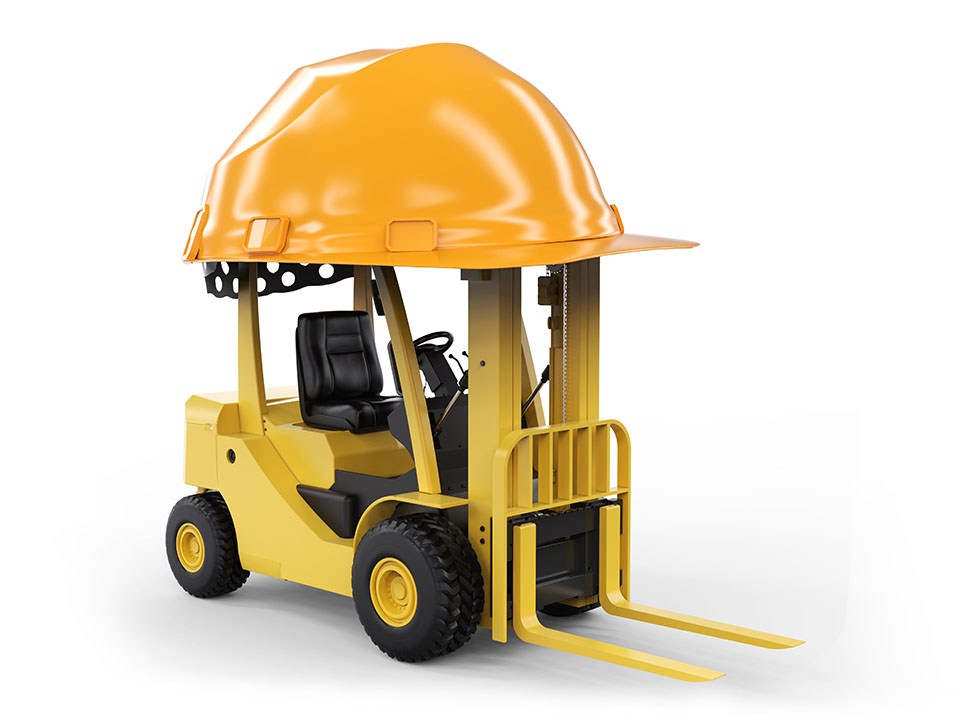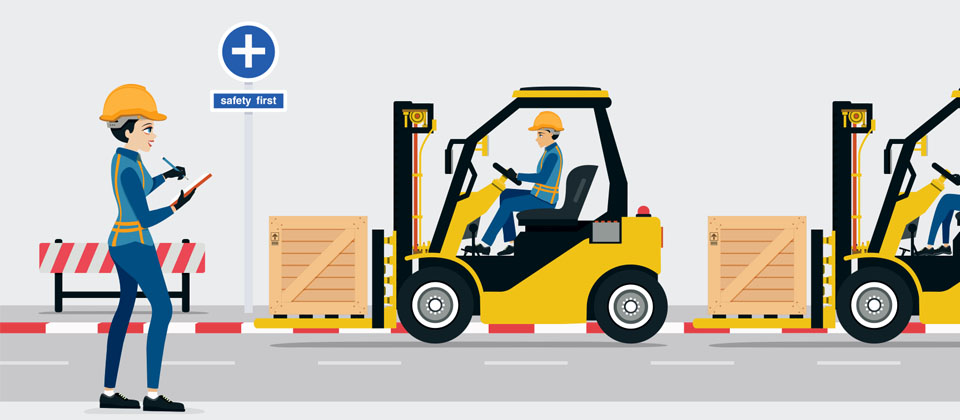Safety Source
Safe Forklift Operation
A forklift in motion is a safety risk in motion
This month's Safety Source reviews forklift safety training requirements and certification.
The Occupational Safety and Health Administration (OSHA) defines a powered industrial truck as a mobile, power-propelled truck used to carry, push, pull, lift, stack or tier materials. There are many different types of powered industrial trucks, and each type presents different operating hazards. The most familiar powered industrial trucks are commonly known as pallet trucks, rider trucks, forklifts or lift trucks. Forklifts/lift trucks are extremely useful in the workplace, as long as they are safely used by trained operators.
Background
OSHA revised the Powered Industrial Truck Standard (29 Code of Federal Regulations [CFR] 1910.178) in 1999 to include training requirements for employees who operate powered industrial trucks. Yet powered industrial truck violations annually remain among OSHA’s top ten most frequently cited standard violations.
Forklift Safety Training Requirements
Employers must develop and implement a training program based on the general principles of safe truck operation, the types of vehicle(s) being used and the hazards they create, and the general safety requirements of the OSHA standard. Trained operators must know how to do the job properly and safely, as demonstrated by workplace evaluations. Formal (lecture, video, etc.) and practical (demonstration and practical exercises) training must be provided. Employers must also certify that each operator has received the training and evaluate each operator’s performance at least once every three years.

Training Program Content
Operators must be initially trained in the following truck-related and workplace-related topics:
Truck Related
- Operating instructions, warnings and precautions for type of truck
- Similarities and differences with automobiles
- Control and instrumentation location and use
- Engine or motor operation
- Steering and maneuvering
- Visibility
- Fork and attachment limitations and use
- Vehicle capacity
- Vehicle stability
- Vehicle inspection and maintenance
- Refueling or charging batteries
- Operating limitations
- Other operating instructions, warnings or precautions listed in the operator's manual
Workplace Related
- Surface conditions where truck is used
- Load composition and stability
- Load stacking, unstacking and transport
- Pedestrian traffic
- Narrow aisle and restricted area operation
- Operation in hazardous locations
- Ramp and sloped surface operation
- Unique or potentially hazardous conditions
- Operating the vehicle in closed environments

Because powered industrial trucks are manufactured by different companies with various models available, the training must be specific to the operating characteristics of the specific powered industrial truck the employee will be using. If an operator was previously trained on one of these topics, and the training is appropriate to the truck and working conditions encountered, additional training on that topic is not required if the operator has been evaluated and found competent to operate the truck safely.
Evaluation and Refresher Training
An evaluation of the performance of each powered industrial truck operator must be conducted every three years. OSHA requires that formal refresher training be conducted under certain circumstances. There is no set frequency, but employers do need to retrain when:
- The operator has been observed to operate the vehicle in an unsafe manner
- The operator has been involved in an accident or near-miss incident
- The operator has received an evaluation revealing that the operator is not operating the truck safely
- The operator is assigned to drive a different type of truck
- A condition in the workplace changes in a manner that could affect safe operation of the truck
Certification
The employer must certify that every operator has received appropriate training, has been evaluated, and has demonstrated competency in performing the operator’s duties. The name of the trainee, date of training, evaluation date and name of the person(s) performing the training or evaluation must be included on the certification.
Sources:
W.W. Grainger, Inc.
29 CFR 1910.178, Powered Industrial Trucks
Occupational Health and Safety Administration (OSHA), Powered Industrial Truck etool



